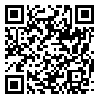BibTeX | RIS | EndNote | Medlars | ProCite | Reference Manager | RefWorks
Send citation to:
URL: http://irj.uswr.ac.ir/article-1-661-fa.html
Objectives: The aim of this research is to design a neuro-cognitive program, based on dysfunctions and alterations of some neural circuits in dyslexics. The visual and auditory working memories in pre-schoolers were evaluated with this program in order to early screening for dyslexia.
Methods: This study is a longitudinal descriptive research. A total of 259 randomly selected pre-schoolers, with an average age of 6 years, participated in the study and the unskilled data of these students were gathered. These subjects were followed for two years. Thereafter, the remaining subjects were assessed accurately for dyslexia using different reading diagnostic tests. Then, the preschool unskilled data and the diagnosis were applied to automate the designed program. The program was designed in a game format and consisted of separate tasks measuring visual and auditory working memories and rapid naming.
Results: From the calculation of content validity rate as the first step of content validity process, 3 out of 5 components, including visual and auditory working memories, and rapid naming were selected. The process and the results of content validity showed that the designed program has an appropriate and acceptable level of content validity. The amount of reliability of the program for visual and auditory working memories, and rapid naming were obtained as 0.89, 0.92 and 0.88, respectively.
Moreover, the discriminative validity for auditory and visual working memories and rapid naming, between children with dyslexia, Attention Deficit Hyperactivity Disorder (ADHD) (a disorder having high similarity with dyslexia) and normal ones were obtained as 0.87, 0.67 and 0.8, respectively. It is worthy to say that the prediction accuracy of this neuro-cognitive program for dyslexia achieved 90.65%.
Discussion: This program has an acceptable validity and reliability. It could be useful as an accurate assessment tool in predicting dyslexia before the occurrence of psychological scars and can be used as a quick screening tool for children at risk for dyslexia.





